Sound Waves
(La Louisiane, Fall 2015, pp.17-21 - Photography by Doug Dugas)
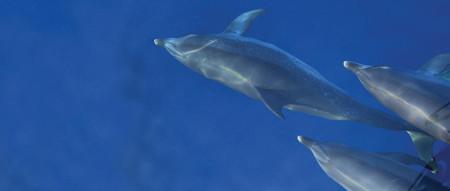
Dolphins, beaked whales and endangered sperm whales in the Gulf of Mexico have a lot to say about their deepwater environment. Some University of Louisiana at Lafayette scientists were part of a multidisciplinary group that spent 10 days listening to them this summer. The researchers are especially interested in how the mammals are faring in the northern Gulf, five years after one of the worst oil spill disasters in history. So they deployed sophisticated instruments to eavesdrop and collect extensive data about the water itself.
On the afternoon of June 23, the R/V Pelican departed from the Louisiana Universities Marine Consortium facility in Cocodrie, La., laden with scientific instruments, 14 researchers and technicians, and a seven-person crew.
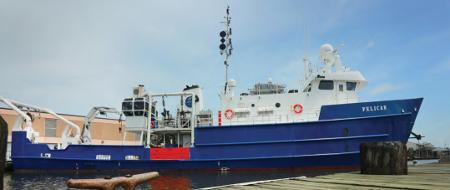
The 116-foot R/V Pelican that sails from Cocodrie, La., is owned by the Louisiana Universities Marine Consortium.
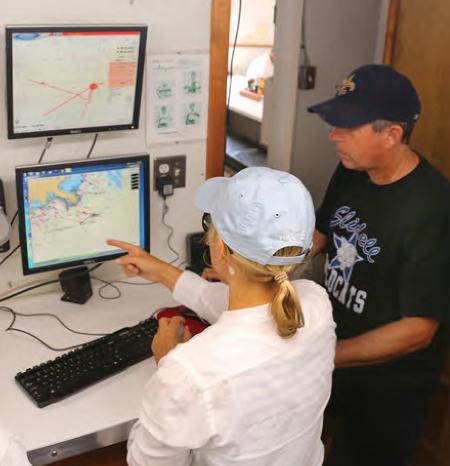
Dr. Natalia Sidorovskaia and Sean Griffin
Dr. Natalia Sidorovskaia, a physics professor at the University of Louisiana at Lafayette, was on board. She is lead investigator of a three-year, $5.2 million grant from the Gulf of Mexico Research Initiative to continue ecological monitoring and modeling of the northern Gulf's deep water, about 100 miles from the Louisiana coastline.
Sidorovskaia and other researchers had conducted passive, underwater acoustic monitoring measurements there in 2001, 2002 and 2007. They anchored recording devices - Environmental Acoustic Recording Systems, or EARS - to the Gulf floor to record sounds made by whales.
Information they collected helped scientists better understand how whales communicate with each other. It was also used by mathematicians and statisticians to develop models that could estimate current and future sizes of whale populations.
On April 20, 2010, a wellhead on the BP Deepwater Horizon rig blew out. Millions of barrels of crude oil spewed into the water before the well could be capped 87 days later.
In September 2010, Sidorovskaia and two UL Lafayette mathematics professors, Dr. Azmy Ackleh and Dr. Nabendu Pal, received a $192,000 National Science Foundation Rapid Response grant. The funds enabled them to reinstall six underwater recording devices in pre-spill locations. They then compared pre-spill and post-spill acoustical data.
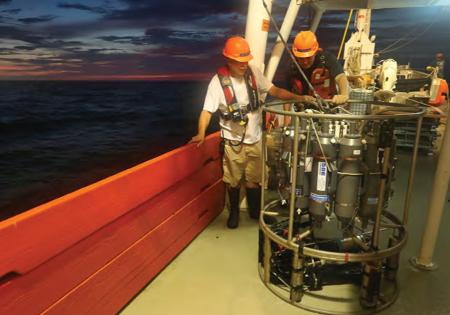
This 12-bottle carousel water sampler collects extensive data.
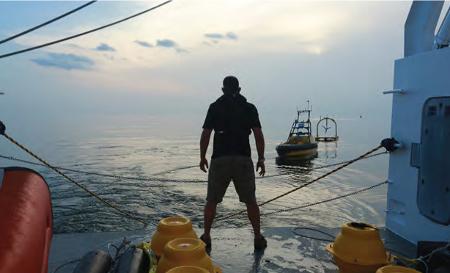
David Rutter checks on two autonomous surface vehicles in tow.
Their conclusion: sperm whales preferred to dive for food farther away from the site of the oil spill. "However, beaked whales remained diving close to the disaster site," Ackleh said. "This perplexing result requires more data to be collected over several years."
The research group was unable to conduct whale monitoring in the area again until it landed the $5.2 million GoMRI grant in 2014.
In June, scientists from the University of Southern Mississippi, Oregon State University, ASV Global, Proteus Technologies LLC, and Seiche Measurements LLC were also onboard the R/V Pelican to collect underwater acoustical data for the GoMRI-funded research. The University of New Orleans and R2 Sonic LLC are associated with the project, but did not have representatives onboard.
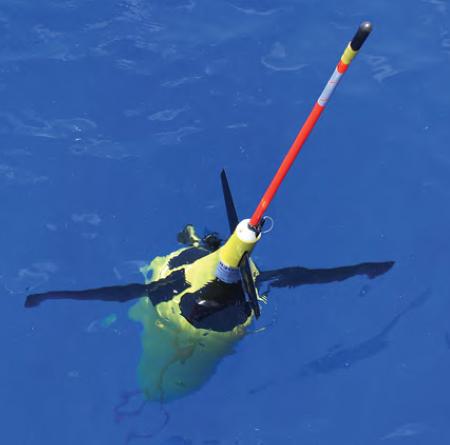
This autonomous Seaglider captures sound at depths of up to 1,000 meters.
Scientists again used tethered EARS to record deepwater mammal sounds. They also relied on autonomous surface vehicles fitted with hydrophones - microphones that detect sound waves under water. A Seaglider, an underwater autonomous vehicle capable of diving to about 1,000 meters, captured acoustical data at various depths. Researchers also relied on old-fashioned, but effective visual observations during daylight hours. Personnel took one-hour shifts, scanning the horizon with the help of "big-eye" and handheld binoculars.
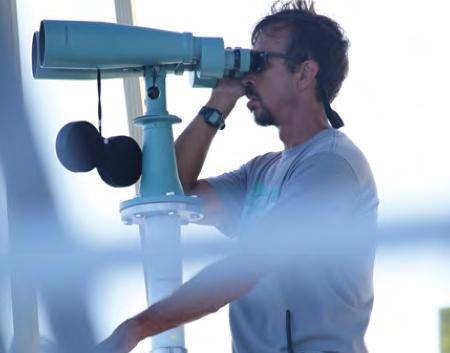
Thomas Ninke scans the water with a "big eye" binoculars, searching for marine mammals.
The EARS and glider were left in the Gulf to collect data until they were retrieved in October.
Sidorovskaia explained what will happen next. "We will bring all this data into the lab and use sophisticated algorithms to extract sounds associated with different species. . . After that, we will do pretty much what we do when we go to a party and we listen to conversations. We are trying to figure out who’s talking and how many people are talking. Using our signal processing algorithms, we are going to decode the data which we recorded."
Then the researchers will put the data in a mathematical model to determine whether the numbers of deepwater mammals have increased or decreased, and where they're living now.
The ability to detect and track whales in real time is of particular interest to oil companies because new federal regulations require them to monitor an area for marine mammals before and during seismic exploration surveys they conduct.
Sidorovskaia said the group hopes to have preliminary findings by March 2016.
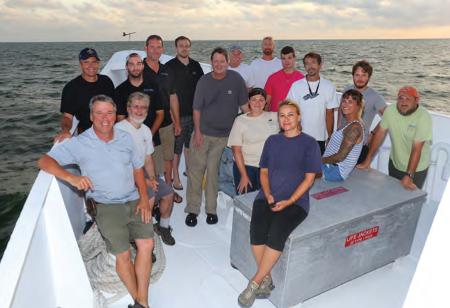
Researchers, technicians and the crew spent 10 days in the Gulf of Mexico.
